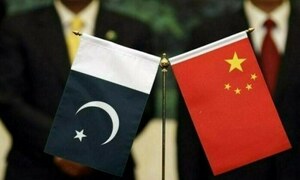EDITORIAL: National Electric Power Regulatory Authority (Nepra) has initiated formal hearings on approval of the revised agreements between Independent Power Producers (IPPs) - with local IPPs privately and foreign IPPs publicly complaining of the use of coercive tactics - and the government of Pakistan committed to reducing the electricity tariffs that are the highest in the region by far.
Two observations are in order. First and foremost, previous PML-N, the PPP and the Musharraf-led administrations must be held responsible for contracts signed with these IPPs that favoured the IPPs at the cost of the Pakistani consumers on two counts – agreeing to take or pay or capacity payments irrespective of the actual electricity bought by the national gird and repatriation in dollars, which has an implicit 4 to 5 percent depreciation at least per annum in-built into the economy.
CEO CPPA-G (central power purchasing agency-guaranteed) informed Nepra that the government has successfully completed talks on review of contracts with 29 IPPs and vehemently denied the use of coercion when asked about the letter sent by 10 IPPs to the Prime Minister claiming coercion. And secondly, the federal and provincial governments’ recent drive towards renewables, while a positive thing from the perspective of climate change, has reduced the demand from the national grid, thereby raising capacity payments. Be that as it may, the CEO of CPPA-G noted that agreements with renewable energy projects would be finalized in the coming weeks. Total savings due to these revisions ion contracts would yield savings of 920 billion rupees, CEO CPPA-G claimed.
The Prime Minister’s office issued a statement on 15 March that the decision to keep petroleum prices constant at a time when the international oil prices had declined, made possible through a raise in the petroleum levy, would be used to reduce electricity tariffs.
The statement was issued the day after the departure of the visiting International Monetary Fund mission to carry out the first review of the 7 billion dollars Extended Fund Facility programme, leading to a widespread perception that the proposal had been approved by the Fund. The Fund did not approve the staff level agreement (SLA), a prerequisite for Board consideration and subsequent tranche release, but noted in its end of mission statement that “the mission and the authorities will continue policy discussions virtually to finalize these discussions over the coming days.” This was seen to imply that the already stipulated prior conditions for the next tranche would have to be met, particularly relating to the budget for next fiscal year, rather than concerns over the Prime Minister’s plan.
Given that total collections of petroleum levy in any given period is a function of demand for the product, which has declined considerably since the massive increase in reliance on this source of funding, a wait-and-see policy would be adopted before announcing any decrease in electricity tariffs. This caution is merited as this levy is largely paid by the lower to middle income earners, car owners and motorbike owners, so argue some analysts as the government increased income tax payable by the salaried class considerably in the current year’s budget accounting for a 120 billion rupees increase during the first eight months of the current year compared to the same period the year before. Others of course justify the rise in income tax collections by pointing out that they were way below potential though they acknowledge that incomes of non-filers in the retail and real estate sector are, on average, much higher and that they should have been appropriately taxed before the salaried. These factors, so claim the government stalwarts, are the reason why the Prime Minister did not announce the reduction in tariffs on 23 March as was widely believed.
To conclude, one must support the government efforts to reduce electricity tariffs as they not only raise the costs of production in this country but also are a source of a steady income erosion of the public. However, an out of the box thinking is required on how to best deal with sectoral inefficiencies and a short-, medium- and long-term plan must be prepared – a short-term one must consider ending the more than half a trillion rupees of tariff differential subsidies, and postponing the focus on renewables till such a time as the existing electricity generation, albeit from expensive sources, is not fully utilized. Medium-term plan must include revisiting the inequitable and anomalous tax structure to reduce reliance on utilities as a source of revenue and in the long term the objective must be to train lawyers in reviewing international contracts carefully before committing generations to a set of conditions that seriously erode their quality of life.
Copyright Business Recorder, 2025





















Comments